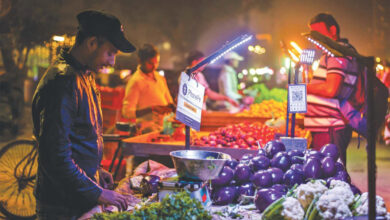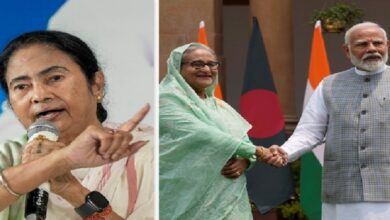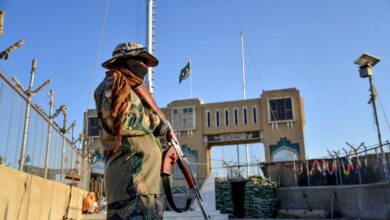14 trading points along Nepal-China border reopen
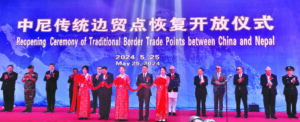
By Dipendra Shakya
Kimathanka in Sankhuwasabha and 13 other trans-Himalayan trade points along the Nepal-China border have finally reopened after four years.
Authorities of both countries on Saturday formally opened the border points that had been closed after the coronavirus spread in 2020. Deputy Prime Minister and Minister for Foreign Affairs Narayan Kaji Shrestha, who reached Tibet of China through the Kimathanka border point, and Vice-chairman of the Tibet Autonomous Region of China Silang Nima jointly opened the traditional trading points amid a function in the Tibetan city of Chentang. They announced the reopening of 14 of the 21 trading points in various districts along Nepal’s mountain range.
Chinese authorities had closed the border passes in January 2020 to prevent the spread of the coronavirus, which hugely affected the Nepalis living in the remote mountain villages close to Tibet.
Talking briefly to reporters at Tumlingtar Airport, Foreign Minister Shrestha said the border points were reopened after a series of talks and discussions between the top political leaderships of Nepal and China. The border reopening will help smoothen trade and interactions between the people of the two countries, said Shrestha.
According to the minister, as many as 14 trading points of Taplejung, Sankhuwasabha, Dolakha, Gorkha, Mustang, Dolpa and Darchula districts were reopened on Saturday. He said that the Chinese side would gradually reopen the seven other border points.
Talks had been going on at the diplomatic level for long on reopening the border points, Shrestha said. “It was agreed during my China visit in March to reopen the 14 traditional border trading points.” Four such points were reopened in 2023.
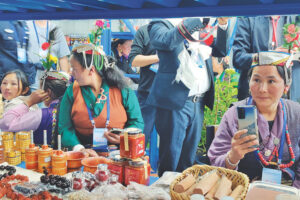
Shrestha toured China in March on a nine-day official visit at the invitation of his Chinese counterpart Wang Yi.
A joint reopening ceremony of traditional border trading points between Nepal and China held in Chentang Town, Shigatse City, in Tibet Autonomous Region of China on Saturday. Photo obtained by the Post
Also present at the border reopening function were Chief Minister of Koshi Hikmat Kumar Karki, joint-secretaries of the home and foreign ministries in Kathmandu, chief district officer of Sankhuwasabha, chairman of Bhotkhola Rural Municipality that borders Tibet and security chiefs of Solukhumbu.
The border closure in early 2020 affected a large number of Nepali traders, seasonal workers and residents of several mountain districts. People of the settlements near the Chinese border had difficulties managing essential supplies as the markets in Tibet were closed to them.
Villagers living near the China border are dependent on Tibet for essential commodities, as much of the rugged terrain is yet to be connected by Nepal’s national road network. Tibet is also the major market to sell their products ranging from medicinal herbs to farm animals.
“People of several remote settlements in Bhotkhola had to buy food and other supplies from Khandbari, the district headquarters of Sankhuwasabha, paying heavily to transport them. Now they can buy essential commodities from Dendang and Changa markets in Tibet,” said Wang Chhedar Bhote, chairman of Bhotkhola Rural Municipality in Sankhuwasabha.
He said that the local unit and the district administration had repeatedly urged the Chinese authorities to reopen the border, to no avail. “The residents of Kimathanka, Chyamtang, Chepuwa, Hatiya and other settlements of Bhotkhola will have a huge relief with the reopening of the border after four years,” said Bhote.
The under construction Khandbari-Kimathanka road is nowhere near complete. The Bhotkhola residents have to transport goods employing mules or porters. Kimathanka is 162 kilometres north of Khandbari.
Bhote is hopeful that the border reopening will boost cross-border trade and create employment opportunities for Nepali youths.
“The customs revenue will be increased. The local products will be sold in Tibet,” Bhote, the local government chief, added. According to him, many people from northern villages used to go to Changa Bazaar in Tibet to work.
Moreover, due to the protracted border closure, hundreds of people on the Nepal side have been unable to meet their relatives in Tibet. People of border villages of Tibet and Nepal have marital links. They will now be able to visit their relatives across the border.

